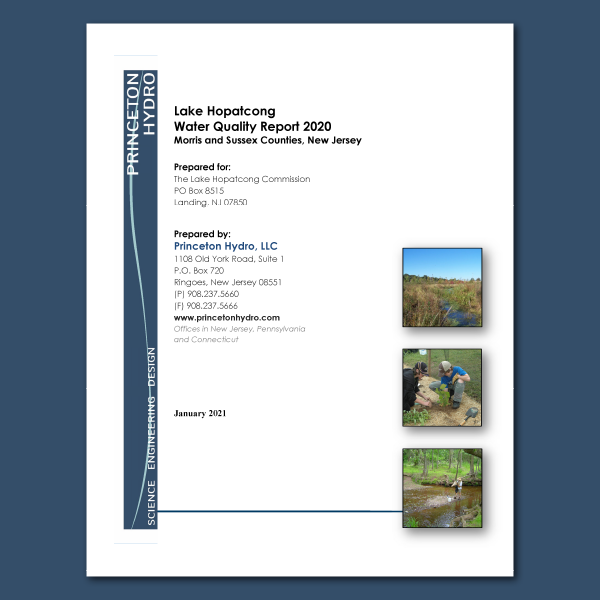
January 27, 2021| Environment
By: Donna Macalle-Holly
Results of the 2020 Lake Hopatcong Water Quality Report were presented by Princeton Hydro Director of Aquatic Resources Dr. Fred Lubnow at the January meeting of the Lake Hopatcong Commission. Since 2018, the water quality monitoring program has been funded by the Commission.
According to the report, “The current water quality monitoring program is valuable in terms of continuing to assess the overall “health” of the lake on a year‐to‐year basis, identifying long‐term trends or changes in water quality, and quantifying and objectively assessing the success and potential impacts of restoration efforts. In addition, the in‐lake water quality monitoring program continues to be an important component in the evaluation of the long‐term success of the implementation of the phosphorus TMDL‐based Restoration Plan, which was approved by NJDEP in April of 2006. The monitoring program also provides the data necessary to support the Foundation’s and Commission’s requests for grant funding to implement both watershed‐based and in‐lake projects to improve the water quality of Lake Hopatcong. Finally, much of the data collected in 2020 will be used to assess the relative effectiveness of in‐lake and watershed‐based projects, designed to prevent or minimize the impacts of HABs in Lake Hopatcong.”
For previous water quality reports, click HERE.
Below is a video summary of the report from Dr. Lubnow as well as a written summary from the Lake Hopatcong Commission.

December 17, 2025
Community, Fundraising, People

December 16, 2025
Community, Environment